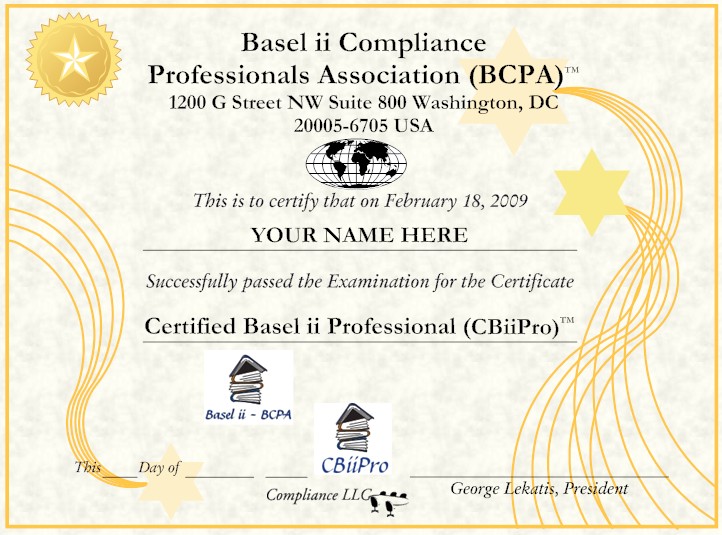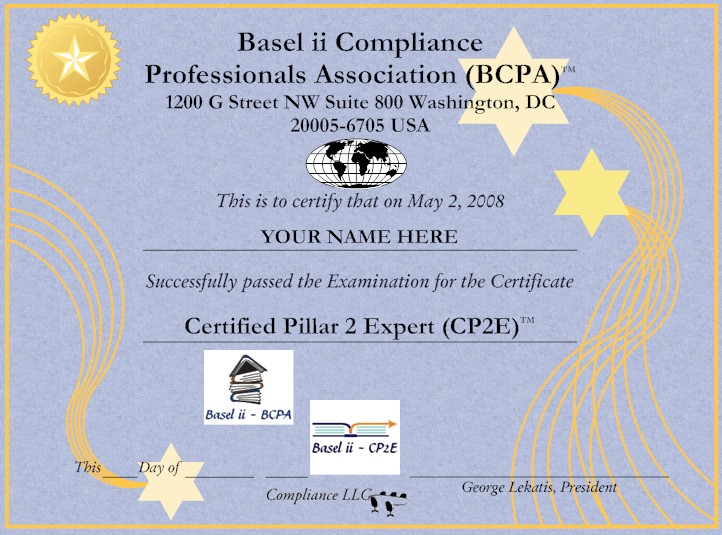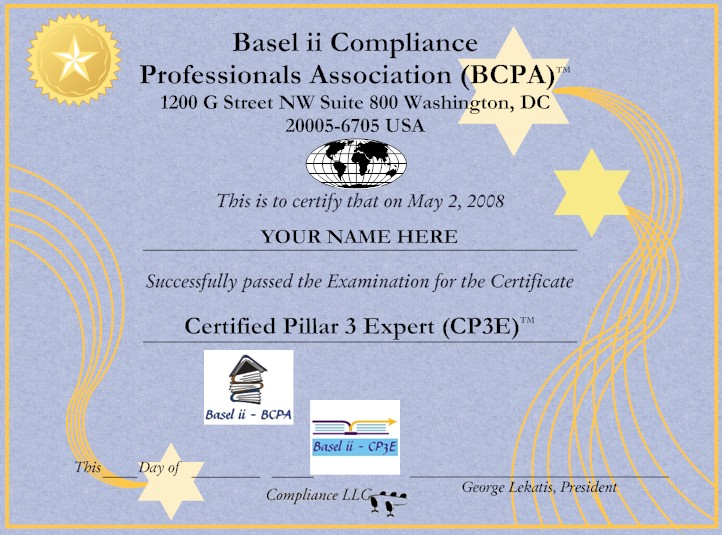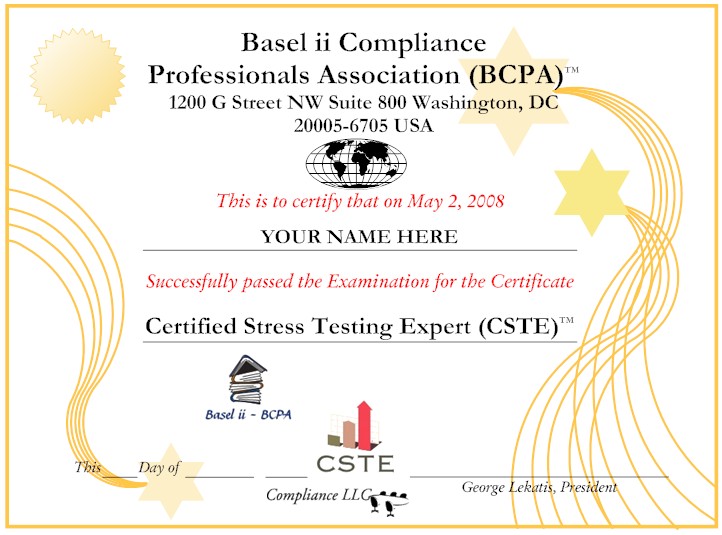Basel
ii in the United States of America
From the
Basel ii
Compliance Professionals Association (BCPA),
the largest association of Basel ii Professionals in the
world
Final Rule, USA
Risk-Based Capital Standards:
Advanced Capital Adequacy Framework
Clean-up calls
To satisfy the operational requirements
for securitizations and enable an originating bank to exclude the underlying
exposures from the calculation of its risk based capital requirements,
any clean-up call
associated with a securitization must be an eligible
clean-up call.
The
proposal defined a clean-up call as a contractual
provision that permits a servicer to call securitization
exposures (for example, asset-backed securities) before
the stated (or contractual) maturity or call date.
The
preamble to the proposed rule explained that, in the case of a
traditional securitization, a clean-up call is generally accomplished by repurchasing the remaining
securitization exposures once the amount of underlying exposures or outstanding
securitization exposures falls below a specified level.
In the
case of a synthetic securitization, the clean-up call may
take the form of a clause that extinguishes the credit
protection once the amount of underlying exposures has fallen below a specified level.
Under
the proposed rule,
an
eligible clean-up call would be a clean-up call that:
(i) Is exercisable solely at the
discretion of the servicer;
(ii) Is not structured to avoid allocating
losses to securitization exposures held by investors or otherwise structured to
provide credit enhancement to the securitization (for example, to purchase non-performing
underlying exposures); and
(iii) (A) For a traditional
securitization, is only exercisable when 10 percent or less of the principal amount of the
underlying exposures or securitization exposures (determined as of the inception of the
securitization) is outstanding.
(B) For a synthetic securitization, is
only exercisable when 10 percent or less of the principal amount of the reference
portfolio of underlying exposures (determined as of the inception of the securitization) is
outstanding.
A number of comments addressed the
proposed definitions of clean-up call and eligible
clean-up call.
One
commenter observed that prudential concerns would also be satisfied if the call were at the
discretion of the originator of the underlying exposures.
The agencies concur with this view and
have modified the final rule to state that a cleanup call may permit the servicer or
originating bank to call the securitization exposures before the stated maturity or call date,
and that an eligible clean-up call must be exercisable solely at the discretion of
the servicer or the originating bank.
Commenters also requested clarification whether, for
a securitization that involves a master trust, the
10 percent requirement described above in
criteria (iii)(A) and (iii)(B) would be interpreted as applying to each series or
tranche of securities issued from the master trust.
The
agencies believe this is a reasonable interpretation.
Thus,
where a securitization SPE is structured as a master trust, a
clean-up call with respect to a particular series or
tranche issued by the master trust would meet
criteria (iii)(A) and (iii)(B) so long as the
outstanding principal amount in that
series was 10 percent or less of its original amount at the inception of the series.
Additional supervisory guidance Over the last several years, the agencies
have published a significant amount of supervisory guidance to assist banks with
assessing the extent to which they have transferred credit risk and, consequently,
may recognize any reduction in required regulatory capital as a result of a
securitization or other form of credit risk transfer.
In general, the agencies expect banks to
continue to use this guidance, most of which remains applicable to the advanced
approaches securitization framework.
Banks are encouraged to consult with their primary
Federal supervisor about transactions that require additional guidance.
Over the last several years, the agencies
have published a significant amount of supervisory guidance to assist banks with
assessing the extent to which they have transferred credit risk and, consequently,
may recognize any reduction in required regulatory capital as a result of a
securitization or other form of credit risk transfer.
In general, the agencies expect banks to
continue to use this guidance, most of which remains applicable to the advanced
approaches securitization framework.
Banks are encouraged to consult with their primary
Federal supervisor about transactions that require additional guidance.
Receive the New Member
Orientation Newsletters.
Understand Basel II
You will have the
opportunity to learn what members registered before you have
already learned. Understand better the Basel II environment,
projects, careers, challenges and opportunities.
Return
to Table of Contents
Return to
Index
Read more
about our
Certified Basel
ii Professional (CBiiPro)
program
Read more
about our
Certified Pillar 2 Expert
(CP2E)
program
Read more about our
Certified Pillar 3 Expert
(CP3E)
program
Read
more about our
Certified
Stress Testing Expert (CSTE)
program



 | |